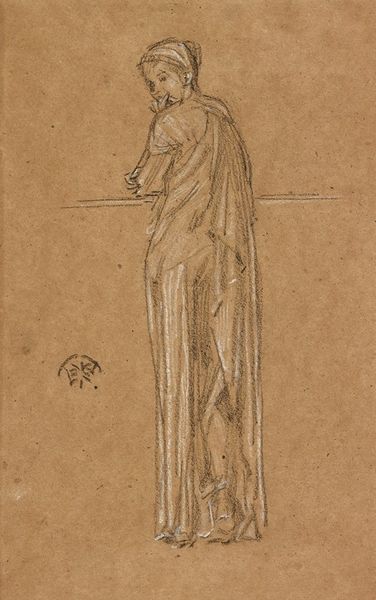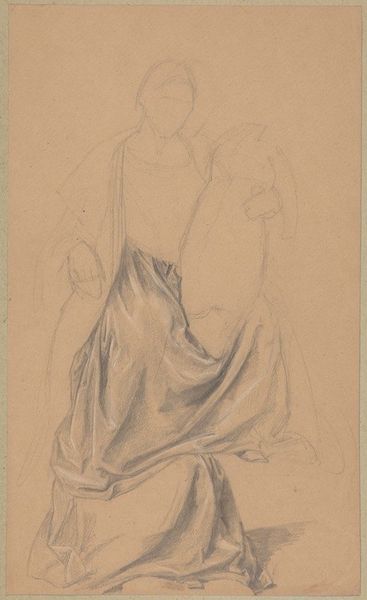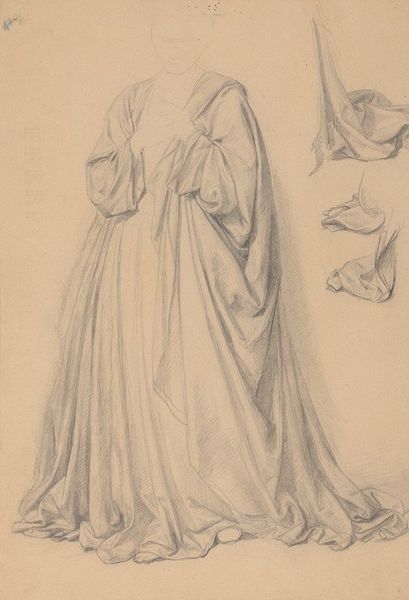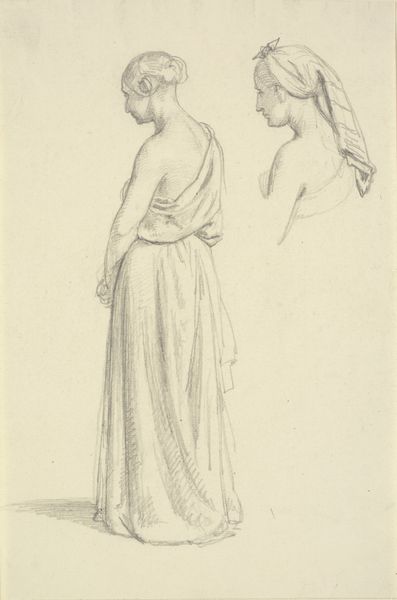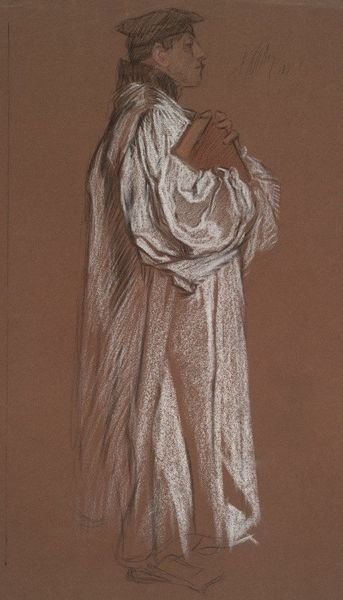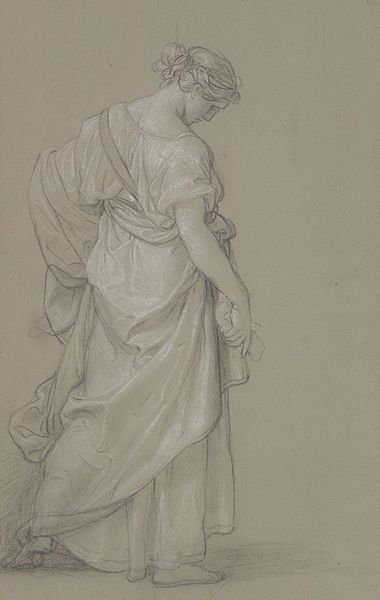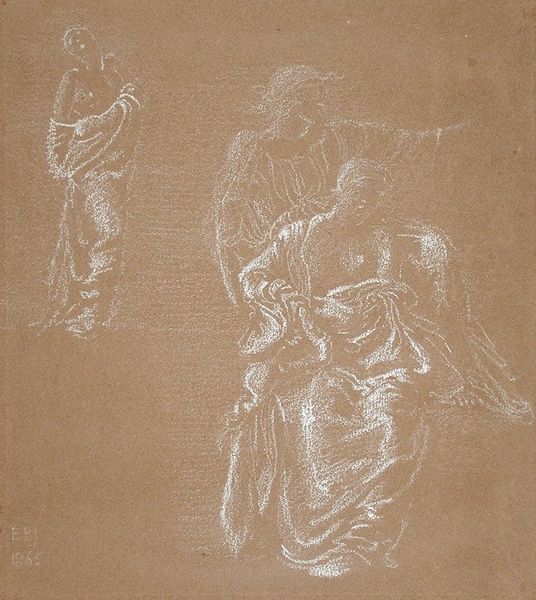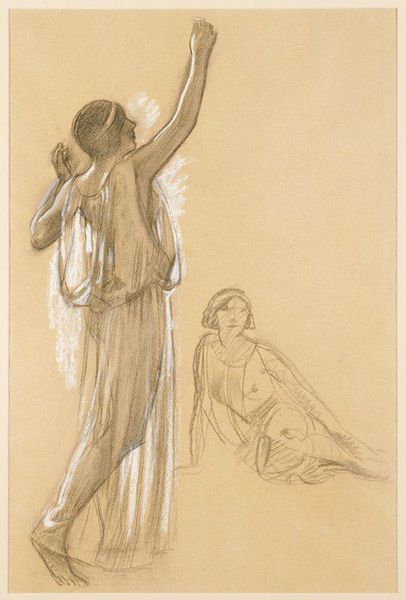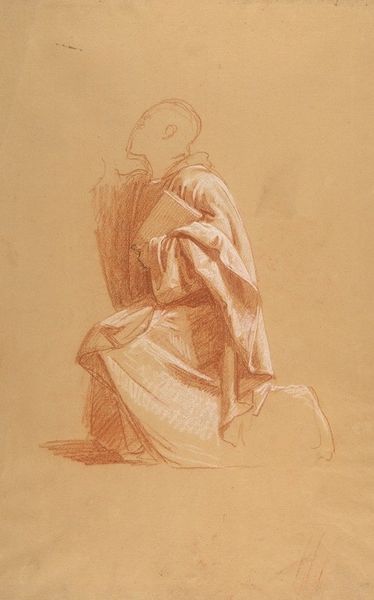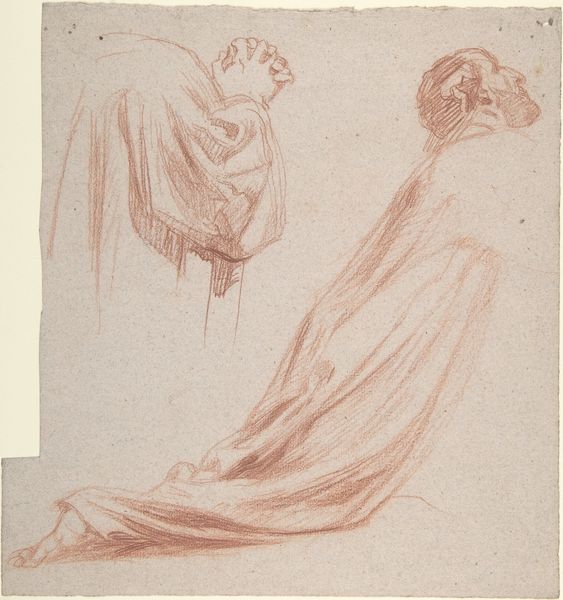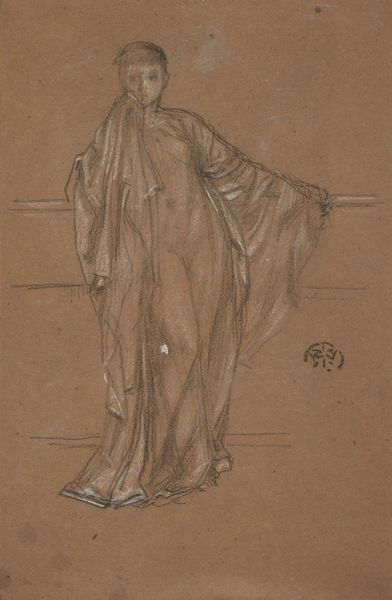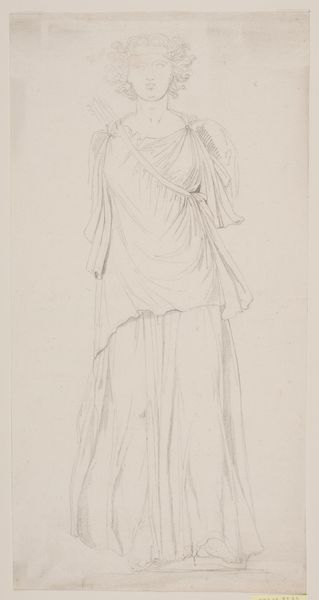
drawing, pencil
#
portrait
#
drawing
#
charcoal drawing
#
figuration
#
pencil
#
academic-art
Copyright: Public Domain: Artvee
Curator: Welcome. What immediately strikes you about this work by Frederic Leighton? Curator: It's giving me ancient Greece by way of Victorian England—very proper, very draped. Are those supposed togas or tea gowns? It feels idealized, but also, strangely removed from lived experience. Curator: Quite. Leighton's "Studies of a Standing Draped Figure" is an exercise in form, rendered primarily in pencil and charcoal. Note how the artist uses delicate hatching and bold strokes to create the illusion of depth and volume in the drapery. It’s about light and shadow, texture and the fall of cloth across the body. Curator: Yes, but bodies depicted like this have always carried social weight. This aesthetic romanticizes a specific vision of femininity: passive, classical, and frankly, unattainable for most women of his time. Where are the working women? The women of color? This is a very selective ideal. Curator: Consider how the arrangement of figures emphasizes balance. The variations in pose showcase the artist's understanding of anatomy and fabric. Observe the treatment of light as it defines each fold, each plane. The interplay of shadow creates drama, isolating the figures against the neutral ground. Curator: And who did that ideal serve? Artists like Leighton helped solidify a visual culture that placed white, upper-class women on a pedestal, while simultaneously erasing or marginalizing others. This impacts how we still perceive beauty and value today. Curator: While I acknowledge those narratives, to focus solely on them risks overlooking Leighton's skillful execution. The composition's subtle asymmetry introduces a dynamic quality, urging the eye to wander across the sheet. It reveals a fascination with classical sculpture and form. Curator: It's not about denying skill; it’s about interrogating whose stories get told and why. This isn't just an aesthetic exercise—it’s a cultural statement. We must analyze whose voices are amplified. Curator: A viewpoint certainly worthy of further study. It seems to me we both value careful viewing of this type of figure work, even with our varied takes. Curator: Absolutely, recognizing how the aesthetic choices artists make directly impact social realities, then and now. It changes how we read the drawing entirely.
Comments
No comments
Be the first to comment and join the conversation on the ultimate creative platform.
